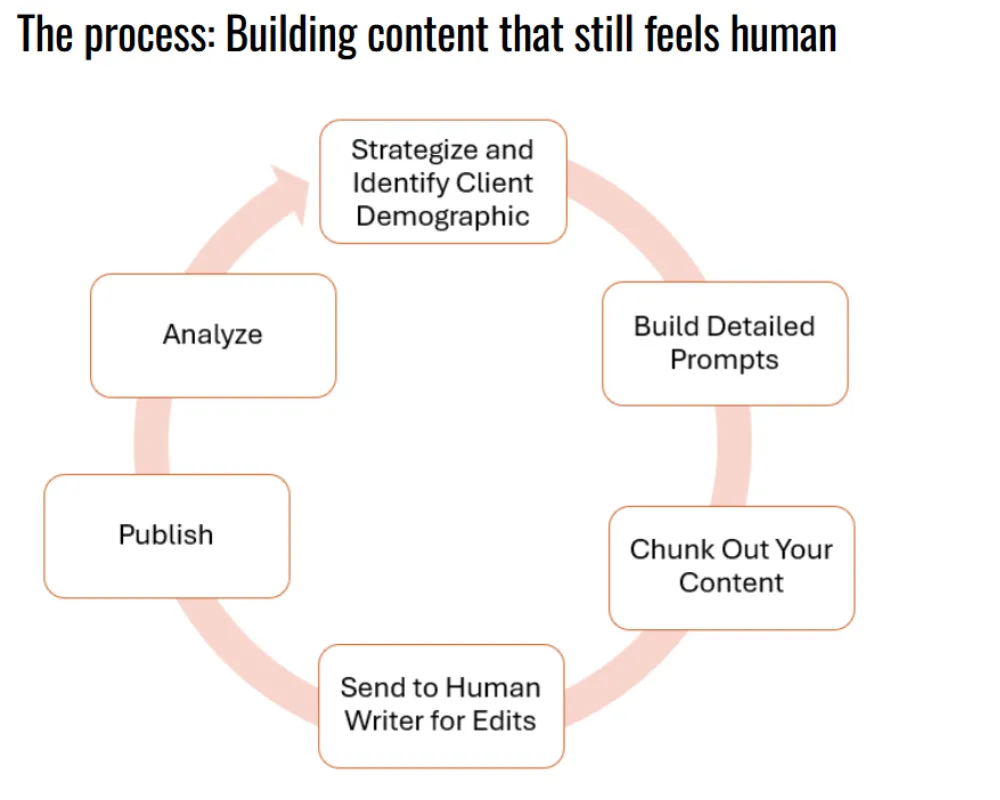In 2025, artificial intelligence will be everywhere, and let's face it, it has greatly accelerated the production of content. The trouble with most AI writing is that it often feels robotic. You’ve probably read something before and thought, “This feels like a machine wrote it.” That’s exactly what robotic writing sounds like.
Why AI Content Often Feels Robotic
Although AI excels at assembling data, it lacks human emotions and experiences. Because of this, its initial drafts may feel:
- Too stiff or formal
- Too regimented and lacking in flow
- Absence of personality, humor, or warmth
The inability of AI to write is not the issue. The problem is that AI lacks empathy. Patterns can be imitated, but human experience cannot. And that's where you can help.
Simple Edits That Add a Human Touch
Your prompt is the first step towards humanizing AI content. Be specific rather than typing something generic like "Write a blog about SEO." Inform the AI of the audience, the tone, and the structure. For instance:
Create a blog post that includes an introduction, four subheadings, and a conclusion. Write as though the reader is unfamiliar with the subject, use a conversational tone, and provide straightforward explanations. This one action has a significant impact.
Here are some more fast edits that bring humanity right away:
- Break the rules a bit. Use "And" or "But" to begin sentences. It seems organic.
- Change the length of the sentences. Combine long lines with short, snappy ones.
- Include a few eccentricities. Make use of words or phrases that you would say aloud.
- Edit in sections. Instead of requesting the entire article at once, guide AI section by section. It maintains the same tone.
How Storytelling and Examples Build Relatability
Readers connect with stories, not just information. This is something AI struggles with unless you feed it examples.
For example, instead of:
“Golden hour is the best time for photos.”
Make it relatable:
“Next time you’re taking a selfie, try it at golden hour — about ten minutes after sunrise or before sunset. The soft light makes your skin glow, and you’ll barely need filters.”

The Role of Personal Voice in AI-assisted Writing
Your personal voice is the secret sauce. AI might help you speed up the process, but it can’t copy your experiences, humor, or opinions.
Here’s how to add your voice:
- Give brief personal notes. "I used this trick myself when writing a client blog last week," for instance.
- Add your thoughts. Explain the significance of the facts rather than merely stating them.
- Try to use more dialogues. Instead of writing to a bunch of strangers, write as though you were addressing one individual.
Final Thoughts
Although AI is a fantastic tool for creating content, it is not an ultimate solution. You have to combine AI's efficiency with your own character, narratives, and creativity if you want your writing to sound human and feel relatable. Consider it similar to cooking: AI provides the ingredients, but you choose the recipe and season it.
Allowing AI to create the outline and then going back and customizing each section is a straightforward method of using AI. Remember a little imperfections is not bad, that actually makes the writing feel authentic!
When you find that balance, your AI generated content won’t just avoid sounding robotic. It will actually connect with people in a way only human writing can.




.png)
.png)

.png)

.webp)
.webp)
.webp)
